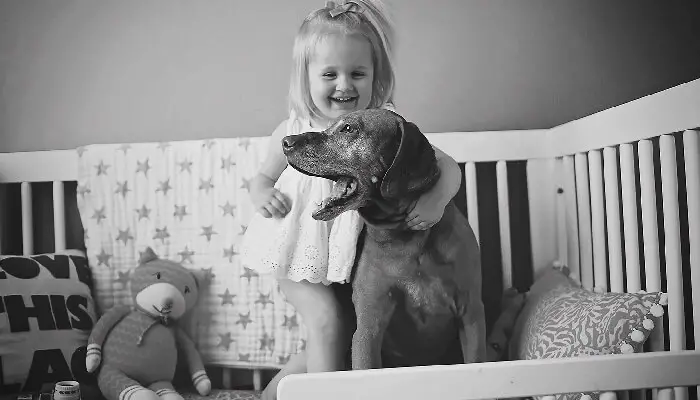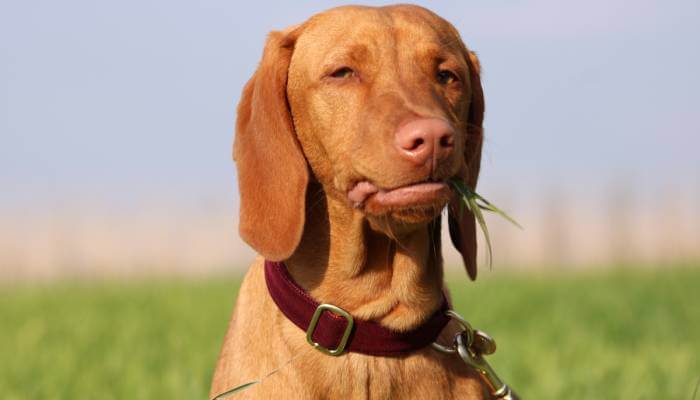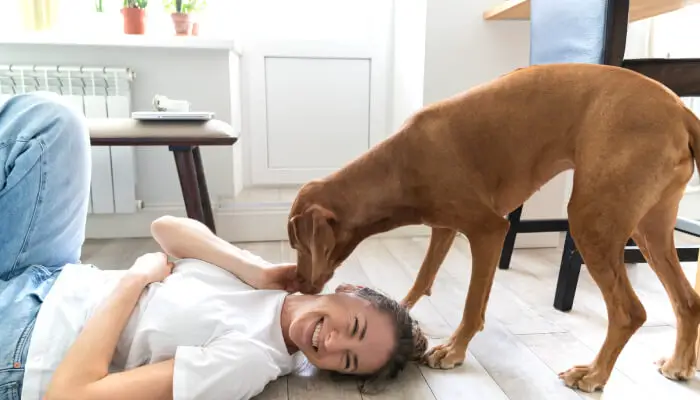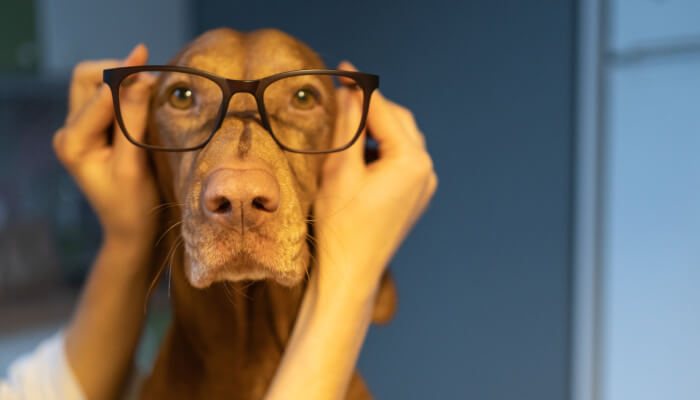Did you know that the Why Is My Vizsla So Small? What Might Be The Reasons? is one of the most popular breeds in America, and this breed has a lot of potentials to be a great family dog. So, if you are considering bringing home a, Why Is My Vizsla So Small? What Might Be The Reasons?
So, why do you think is your Vizsa so small? Unfortunately, there are few reasons for the smaller size of your dogs, such as lesser nutrients in the diet, poor environment, genetics, trauma, illness, and excessive breeding. Along with this, some diseases like cancer, Wilson, and thyroid disorders might also halt your Vizsla’s growth.
Read further because this article will help you learn more about all the reasons mentioned above in detail.
Can Vizslas Be Small?
Generally, Vizslas are about the same size as most other medium-sized breeds, not too big and small. But some Vizslas end up being smaller than the average for their species due to a condition called dwarfism.
The average weight and height of Vizla are about 50 pounds and 21 inches tall.
However, some dogs weigh less than 30 lbs for males and 25 pounds for females or grow taller than 24 inches. Males can be as short as 16 inches.
Further, the miniature version is more in line with its AKC breed standard and weighs less than 40 pounds. Moreover, the height of the small breed is typically less than two feet at the shoulder.
Why Is My Vizsla So Small?
Dwarfism is a condition that can cause your Vizsla to be smaller than the average for their breed. Here are some of the reasons why:
Too Little Food Makes Vizsla So Small
One of the most common reasons is lack of adequate nutrition in the diet. The Vizsla is a hunting dog and needs to eat the meat, bones, organs of its prey to ensure they are getting enough protein.
A lack of food means that he’s underweight and may be missing out on crucial nutrients for growth. If your pet isn’t eating or feeding your dog less than their ideal caloric intake, they will eventually shrink down to a smaller size and become malnourished.
Underactive Thyroid Gland
Sometimes your Vizsla might be small because their thyroid gland is underactive. The thyroid produces hormones that regulate metabolism and helps in growth. So, symptoms of thyroid defect are a dry coat, weight gain/loss, hair loss on the head or elsewhere on the body, lethargy (excessive daytime sleepiness), muscle weakness, and difficulty breathing. Regular vet checks will detect this problem.
Vizsla Is So Small Due To Excessive Breeding
The puppies from overbreeding can be small and have a genetic defect called dwarfism, an abnormally short stature resulting in a disproportionately large head on the body. This condition might also cause stunted growth, breathing problems, and joint stiffness. So if you are getting your Vizsla from a breeder, make sure it is not overbreeding and that they are breeding responsibly.
Winslow’s Disease
Winslow’s Disease is a disease due to an infection of the heart or kidneys. It might result in stunted growth and symptoms such as difficulty breathing, congested lungs, cough, fever, diarrhea, vomiting, and anemia.
Vizsla Is So Small Due To Cancer
If your Vizsla’s thyroid gland is cancerous, it might affect their growth rate or cause them to stop growing altogether. It can also lead to weight loss and other symptoms such as poor coat condition, lethargy (excessive daytime sleepiness), difficulty breathing, cough, and blood in the stool.
Trauma Or Injury
Trauma or injury during their first year can cause dwarfism in Vizslas. Mostly, you will see this in the show dogs. Since this traumatic event causes damage to a dog’s growth plates, it inhibits bone development.
Vizsla Is So Small Due To Genetics
Vizslas inherit the characteristic traits of their parents that includes their size. Therefore, if a Vizsla inherits small genes from either parent, the dog will also likely have those traits. Genetics also plays a role in this condition. So, if one parent is a dwarf Vizsla, the offspring will also have an 80% chance of being a dwarf.
Poor Environmental Factors
The cause of the dwarf Vizsla syndrome is unknown. But most people believe that genetics and environmental factors play a role in this condition. Environmental factors may include poor nutrition, inadequate shelter from the cold, or exposure to toxins that cause dwarfism in dogs. It is because these conditions block the growth hormones.
How Big Does A Vizsla Get?
There is no set height for a Vizsla. The breed standard says that the minimum weight should be 16 pounds, but they can range in size from 15 to 30 pounds in adulthood. Vizslas are strong and agile dogs with an average life expectancy of 12-14 years.
A small dog does not necessarily mean a weak dog. On the contrary, the Vizsla is a lovely and gentle breed that can make an excellent family companion. However, the average adult male should be about 55 lbs and 22 inches tall. Females will typically weigh 45 pounds, standing at 20 to 23 inches and averaging between 16 to 18 inches for males.
How To Prevent Dwarfism In Vizslas?
It’s not uncommon for Vizslas to suffer from dwarfism. And Limiting food intake to healthy quantities can prevent dwarfism in Vizsla. You should also ensure they are getting enough exercise and protein from sources such as whole foods, small amounts of beef jerky treats, or a supplement for your dog’s diet.
Moreover, some ways to prevent dwarfism in your Vizsla are:
- Provide a healthy diet that consists of protein from whole foods, beef jerky treats, or supplements.
- Keep your Vizsla active to stimulate their brain and use up energy. So, they don’t (or at least minimize) the natural tendency for those with dwarfism to be inactive.
- Take them to a groomer regularly for your Vizsla’s physical and mental health.
- Bathe them as needed, preferably at least once per week.
- Select the breeds of Vizslas that are not prone to dwarfism.
- Manage a healthy and friendly environment for your Vizsla to live in and be comfortable.
- Keep the living space warm enough to feel safe from harsh winter weather conditions, but not too hot where their body can overheat.
- You should also invest in high-quality dog food with appropriate levels of protein and nutrients as well as supplements if needed.
- Consult with the Vet if anything seems off. The Vet will perform a complete physical examination. In addition, the dog might need an X-ray, blood tests, and other diagnostic tests to find out if something else is going on with it.
All this will help ensure that your Vizsla will maintain a healthy weight and is not at risk of becoming too small.
Conclusion
In conclusion, Vizslas are famous for being small, but some can be tiny. One of the reasons is dwarfism, an abnormality in size and shape. You can diagnose it by genetic testing done on a blood sample.
Thus, it’s essential to keep your dog healthy at all times, including making sure they’re getting enough nutrients from their food so that you don’t end up with a smaller than average adult Vizsla.
If you have any more questions about this topic, you can drop your queries in the comments.



